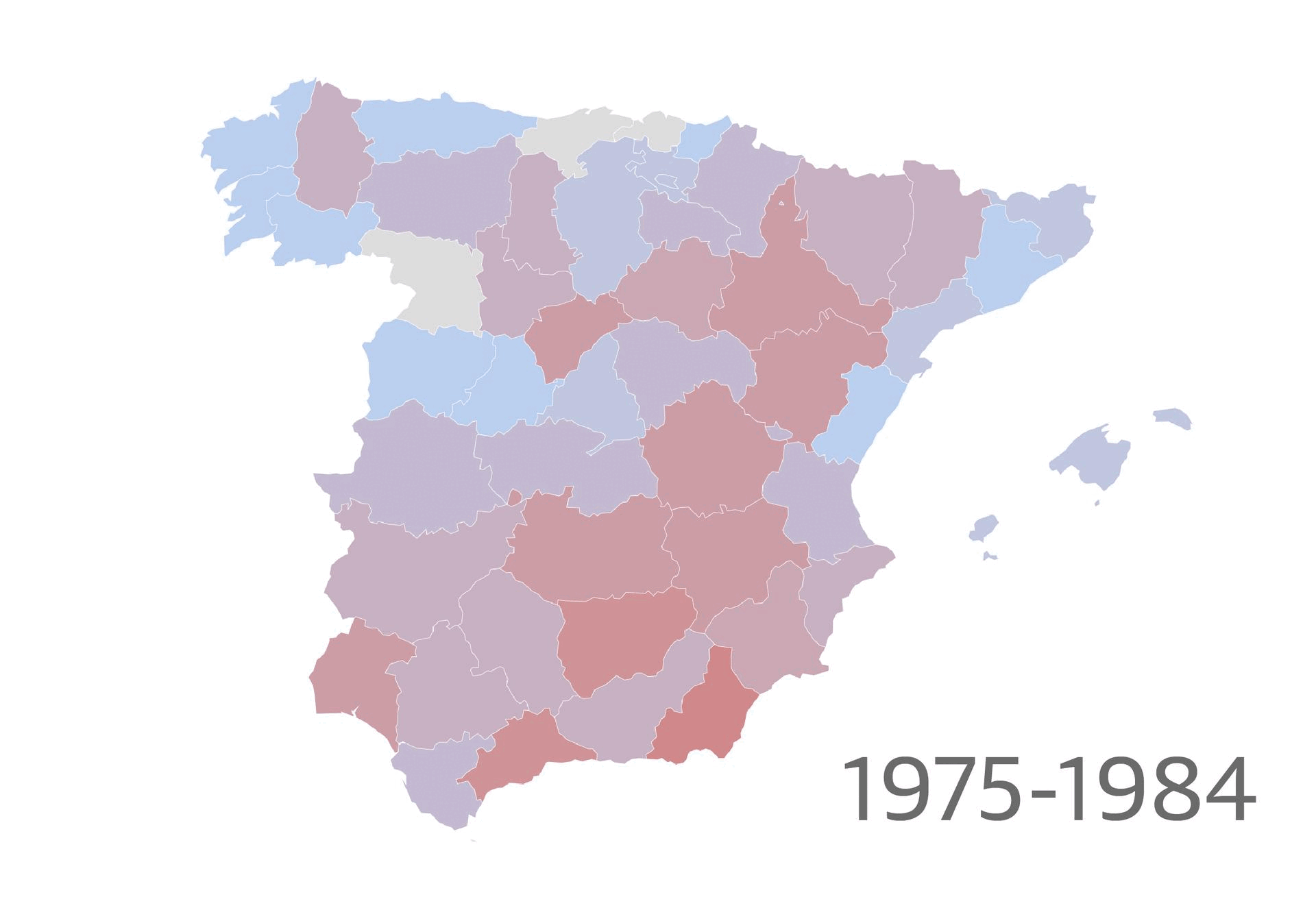Six Charts Showing How Heatwaves Are Arriving Earlier and Lasting Longer
The current extreme heat episode in the peninsula is the earliest since 2022 and the 12th to occur in June since 1975
Sara I. Belled
Monday, 30 June 2025, 14:43
The first heatwave of 2025 was recorded in the hottest June in 64 years, and data shows that this situation, where the population endures extreme heat episodes, is becoming earlier, longer, and with a greater anomaly.
Of the 76 heatwaves that have occurred in Spain since 1975, including the first of 2025, the first day was recorded in June on 12 occasions. This is just over 15% of the total, but their number has increased over the years. In fact, no heatwave was recorded in June from 1981 to 1994, three occurred in the following 13 years, and since 2011, seven have occurred.
While this is the earliest since 2022, it is also the second latest recorded in June. In 1981, the heatwave began on June 11, and in 1994 on June 29.
In an analysis provided by Meteoclimática through the blog of the State Meteorological Agency, which considers public entity data on heatwaves over the last 50 years, it is referenced that "this phenomenon has advanced and extended over time to become not so uncommon in this month."
By adding the days of heat per month recorded between 1975 and 2024 (excluding the current heatwave), it is observed how the cells are increasingly coloured and with more intense colours.
It should be noted that, according to Aemet, "a heatwave is considered an episode of at least three consecutive days, in which at least 10% of the considered stations record maximums above the 95th percentile of their series of daily maximum temperatures for July and August of the period 1971-2000." And if in the graph there are cells with one or two days, it means that the wave extended between the end of one month and the beginning of another.
This shows the evolution of two of the phenomena described at the beginning of this report: that it is increasingly common for heatwaves to occur in June and that their duration, especially in July and August, has increased considerably.
The third value in question is the anomaly of the wave, which Aemet calculates as the average of the maximum anomalies of the temperatures recorded at the stations during the heatwave compared to their threshold temperature. A comparable data trend that has been on the rise over the last 50 years.
A trend that does not seem to directly correspond with the evolution of the maximum temperature recorded in each wave. Although there is an explanation for this.
Aemet explains that "while the maximum temperature of the wave is an indicator of the intensity of a heatwave, it is greatly influenced by the stations that record it, so heatwaves affecting only the southern peninsula will generally have higher values than those extending also to the north or only to the north, so when assessing the intensity of a heatwave, the anomaly of the wave is a better indicator."
Between 1975 and 1984, there were provinces in the northern peninsula that did not even record this type of episode, and the maximum number was recorded in Almería (8), Málaga (7), and Jaén (7).
The following decade, the maximum rose to 14 waves recorded in Valladolid or 13 in Huesca and Salamanca.
The maximum between 1995 and 2024 was five per province, quite spread out in the central peninsula.
It rose to 11 in Ciudad Real or 10 in Soria between 2005 and 2014.
And in the last decade, the maximum of 29 heatwaves recorded in Cuenca or 25 in Cádiz multiplies by four and by eight the episodes recorded in these same territories 50 years ago.
AUX STEP FOR JS
Thus, by painting each province with the colour scale, it is observed how the increase in heatwaves occurs throughout the territory, especially in the last decade.
In total, Cuenca holds the maximum number of heatwaves recorded since 1975, with data up to 2024, followed by Ciudad Real (53) and Valladolid (52). At the other end, Bizkaia, which according to Aemet data was not affected by a heatwave until July 1989, has since suffered six of these episodes.





